What Is Branzino?
Branzino is a type of fish that is popular in Mediterranean cuisine. Its scientific name is Dicentrarchus labrax. Branzino has a delicate, white, flaky flesh and a mild, slightly sweet flavor. It is often considered a premium fish and is prized for its culinary versatility.
Branzino can be prepared in various ways, including grilling, baking, roasting, or pan-searing. It is commonly seasoned with herbs such as rosemary, thyme, and lemon to enhance its natural flavors. The fish is often served whole, and its skin becomes crispy when cooked, adding to the overall texture and taste.
In addition to its taste and texture, branzino is valued for being a good source of protein and omega-3 fatty acids, which are beneficial for heart health. The popularity of branzino has expanded beyond the Mediterranean region, and it is now widely available in many parts of the world.
Talk about a popular fish these days; branzino (sometimes spelled bronzino) can be found on more and more restaurant menus and is showing up in many of my favorite fish markets and supermarkets. We find it served as a whole fish with the head on or as fillets in restaurants but sold mainly as a whole fish in markets.
How to Pan Fry Branzino
Ingredients
- 2 fillets branzino
- flour for dredging
- seasoning to taste, like Fisherman's Wharf seasoning
- 1½ tablespoons butter
- 1 lemon quartered, for garnish
Instructions
- Add some flour to a shallow pan.
- Heat a nonstick frying pan over medium heat until hot. I prefer nonstick pans when cooking fish because it helps prevent sticking, although there are good tips for keeping fish from sticking in any pan you use.
- While the pan is getting hot, it's time to dredge the fillets in the seasoned flour, remembering to shake off any extra flour.
- When the pan is hot, add the butter being careful not to let it brown or burn.
- As soon as the butter is melted, add the branzino fillets to the pan skin side down. Cook for 2-3 minutes until the skin browns and crisps.It's essential you don't "play" with the fish or try moving it around the pan until the skin browns or the fillets may fall apart. They are ready to flip when they move in the pan with a little shake.
- Carefully turn the fish over with a large spatula and continue cooking until done. How long will this take? It depends on the thickness of the filet, the type of pan you are using, and the heat you are cooking at. Medium on my gas stove will be different than your gas or electric stove. This is just something you get comfortable with the more you cook. It shouldn't be more than 2 - 3 minutes, but you can check by using a knife to make sure the fish is opaque and starts to flake.
- * Remove the fish from the pan and plate. We served our branzino over grits and topped with a quarter slice of lemon.
Notes
How to Buy Branzino
| Category | Whole Branzino | Branzino Filets |
|---|---|---|
| Where to Buy | Fish markets, Mediterranean specialty stores, or high-quality grocery stores | Same as whole fish; look for freshly cut filets displayed over ice |
| Appearance | Slender, silvery body with a slight green-blue tint; skin should be shiny | Skin-on filets should be glossy and moist; flesh should be bright and opaque |
| Eyes | Clear, full, and slightly bulging – never cloudy or sunken | N/A for filets |
| Skin | Tight, shiny, and metallic; no dull patches or dried-out areas | Skin should still look silvery and slightly iridescent |
| Color of Flesh | Should be firm and white (if visible), not discolored | Flesh should be pearly white with no browning or graying |
| Texture | Press lightly – it should spring back and feel firm, not mushy | Firm, not slimy; slight resistance when touched |
| Smell | Clean, like the sea or ocean breeze; never sour, fishy, or ammonia-like | Same as whole fish – clean, mild, and ocean-fresh |
| Weight (Feel) | Feels heavy for its size – a sign it’s full of moisture and fresh | Filets should not feel dry or floppy |
| Bones (if present) | Should be intact and not protruding or broken | If deboned, no jagged edges or signs of tearing |
| Buy If | You're grilling, roasting whole, or stuffing with herbs | You want to pan-sear, bake, or cook quickly in portions |
When buying branzino, whether at a fish market or a grocery store, consider the following tips to ensure you’re getting a fresh and high-quality fish.
Ask Questions: Don’t hesitate to ask the fishmonger or store staff about the origin of the branzino, when it was caught, and any other relevant information. This can help you gauge the freshness.
Sustainability: Consider choosing branzino that is sustainably sourced. Look for certifications like MSC (Marine Stewardship Council) or other eco-labels that indicate responsible fishing practices.
Frozen Options: If fresh fish is not available, you can also consider high-quality frozen options. Frozen fish can be a good alternative, especially if it’s frozen shortly after being caught to preserve freshness.
Remember to store and transport your branzino properly to maintain its quality. Once you have your branzino, you can prepare it using various cooking methods, such as grilling, baking, or pan-searing, depending on your preference.
I wanted to pan-fry the fillets, so I asked Andy, my fish guy, to fillet them for me. I often ask him to give me the leftover head and carcass to make my fish stock. If I’m only buying one fish, I’ll freeze the head and carcass in a zip-lock bag until I have enough for stock.
How to Cook Branzino
There are many ways to cook this versatile and delicious fish. I have roasted and grilled it whole, but for boneless fillets, I like to lightly coat them in flour, season, and pan-fry them in butter and/or oil.
Although similar to pan-frying flounder or fluke, you’ll most likely find your seafood market leaves the skin on this fish which is fine.
Rather than season the fillets individually, we like to season the flour in which we will dredge the fish. You can season with just salt & pepper to taste, use a seafood commercial brand, or make up your own unique seafood blend using your favorite herbs and spices.
We enjoy a commercial product called Fisherman’s Wharf by Urban Accents with salt, black pepper, dehydrated garlic, white onion, lemon peel, parsley, green peppercorn, green onion, and a little soybean oil. Salt & pepper will do, or come up with your own combination of fresh or dried herbs.
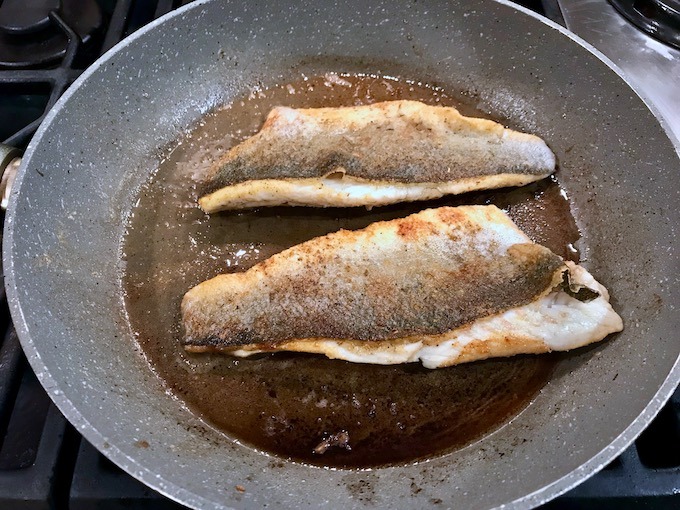
Other Cooking Methods for Branzino
| Cooking Method | Description | Best For |
|---|---|---|
| Grilling | Cooks branzino over open flame or hot coals. Skin crisps up nicely, flesh stays juicy. | Whole branzino, especially when stuffed with herbs and lemon |
| Roasting | Oven-baked at high heat (400–450°F). Brings out natural sweetness, easy to infuse with aromatics. | Whole fish or filets with vegetables |
| Steaming | Cooks gently over boiling water. Preserves moisture and delicate flavor, with no added fat. | Filets or whole fish in Asian-style recipes |
| Poaching | Simmered in flavorful liquid like broth, wine, or court bouillon. Keeps fish tender and moist. | Skinless filets for light, elegant dishes |
| Salt Baking | Whole fish encased in a salt crust and baked. Creates a steam chamber that locks in moisture. | Whole branzino for dramatic table-side presentation |
| Broiling | High, direct top heat from oven. Quickly crisps skin and lightly browns flesh. | Filets or butterflied whole fish |
| Sous Vide | Vacuum-sealed fish is slowly cooked in a water bath at low, controlled temperature. | Skinless filets for ultra-tender texture |
| Smoking | Slow-cooked with wood smoke (hot or cold). Adds deep flavor and a silky texture. | Filets or whole fish with skin-on |
| Ceviche | Not cooked with heat—acid (like lemon or lime juice) "cooks" thin slices of raw fish. | Sushi-grade branzino filets, thinly sliced |
A Fish Of Many Names
The classified name for branzino is Dicentrarchus labrax. Can you imagine seeing that name on a menu or having the waiter say to you “today’s special is whole roasted Dicentrarchus labrax”? No thanks!
I have seen it called European sea bass and Mediterranean sea bass, but this same fish is called something different depending on where you live. For example, if you are dining in France, you may see it called loup de mer or bar commum on the menu.
In Spain, you’ll see it called róbalo or lubina. In Greece, lavráki. In Turkey, levrek. In Germany, Europäischer Wolfsbarsch. A lot of names for the same fish.
Italy has different names depending on what part of the country you are visiting. For example, this fish is called branzino in northern Italy, but in Tuscany, they call it ragno. In the peninsular Italy, you’ll see spigola and pesce lupo in other parts of the country.
In Spain, I counted 16 different common names for Dicentrarchus labrax and a total of 158 names on this website including 狼鱸 in China.
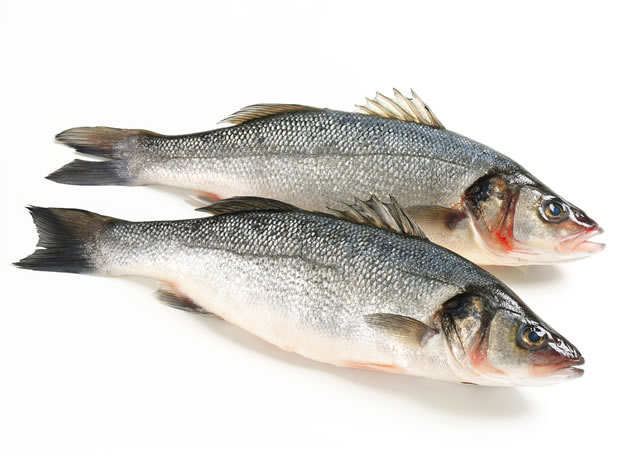
Where Does It Come From?
Branzino, also known as European sea bass, is native to the waters of the eastern Atlantic Ocean and the Mediterranean Sea. Its natural habitat extends from the southern part of Norway to Senegal along the European coast, as well as throughout the Mediterranean, including the Adriatic and Aegean Seas.
This fish species is highly valued in Mediterranean cuisine, and it has been a staple in the culinary traditions of countries such as Italy, Greece, Spain, and France. In addition to its native range, branzino has been introduced to other parts of the world for aquaculture and is now farmed in various regions to meet the demand for this popular seafood.
When you see branzino in markets or on restaurant menus, it could be sourced from its native range in the Atlantic and Mediterranean or from aquaculture operations in other parts of the world. The farmed branzino is often raised in controlled environments to ensure the fish’s quality and sustainability.
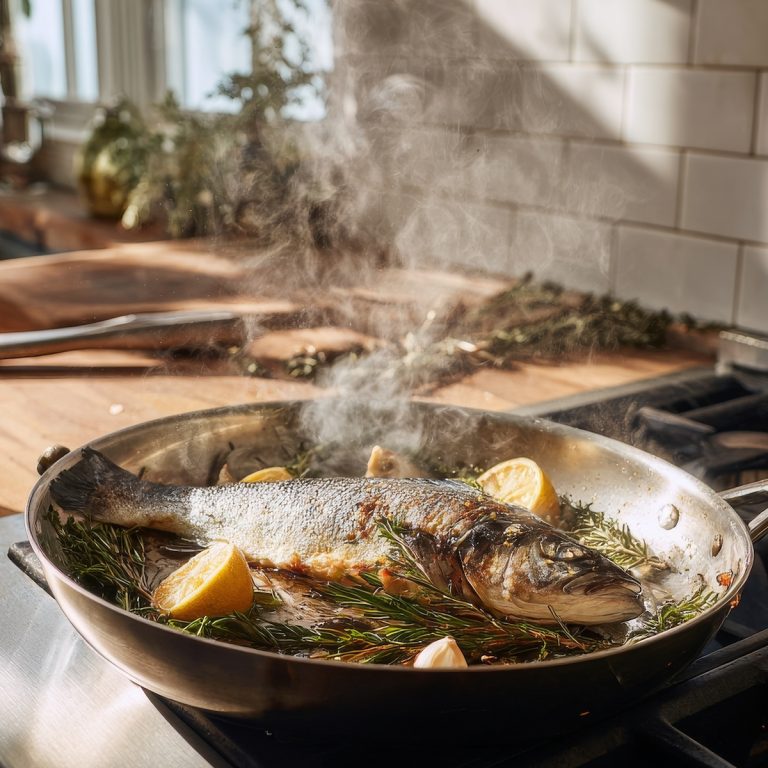
Taste?
Branzino has a delicate and mild flavor with a slightly sweet undertone. The flesh is white, flaky, and tender, making it a popular choice for those who enjoy a light-tasting fish. The taste is often described as clean and fresh, reminiscent of the sea.
The mildness of branzino allows it to take on the flavors of herbs, spices, and other seasonings used in its preparation. Commonly, it is seasoned with herbs like rosemary, thyme, and parsley, as well as with lemon and olive oil, which complement its natural taste without overpowering it.
The texture of branzino is also noteworthy. When cooked, the skin can become crispy, providing a nice contrast to the moist and flaky flesh. Overall, branzino is praised for its versatility in cooking and its ability to appeal to a wide range of palates due to its subtle and agreeable flavor profile.
Substitutions?
If you’re looking to substitute branzino in a recipe, there are several other types of fish that you can consider, depending on your preferences and regional availability. Here are some options:
-
Striped Bass: Striped bass has a mild and slightly sweet flavor, similar to branzino. It has a firm texture and can be cooked in various ways.
-
Sea Bream: Another Mediterranean fish, sea bream, has a comparable taste and texture to branzino. It is often used in similar recipes.
-
Red Snapper: Red snapper has a slightly sweet and nutty flavor with a firm texture. It works well in recipes that call for branzino, especially when grilling or baking.
-
Flounder: Flounder has a delicate, mild flavor and a flaky texture. It is a versatile fish that can be used in various cooking methods.
-
Bronzini (American Sea Bass): While not exactly the same as European sea bass (branzino), the American sea bass, also known as bronzini or black sea bass, has a mild flavor and firm texture that makes it a reasonable substitute.
-
Arctic Char: Arctic char has a mild, salmon-like flavor and a slightly firmer texture. It can be a good alternative for branzino in certain recipes.
-
Trout: Rainbow trout or brook trout can be substituted for branzino in recipes that involve grilling, baking, or pan-searing. Trout has a mild flavor and tender flesh.
When substituting fish, it’s essential to consider the cooking method and the overall flavor profile of the dish. Keep in mind that while these substitutes share some similarities with branzino, each fish has its own unique characteristics. Adjust seasonings and cooking times accordingly to ensure a delicious result.

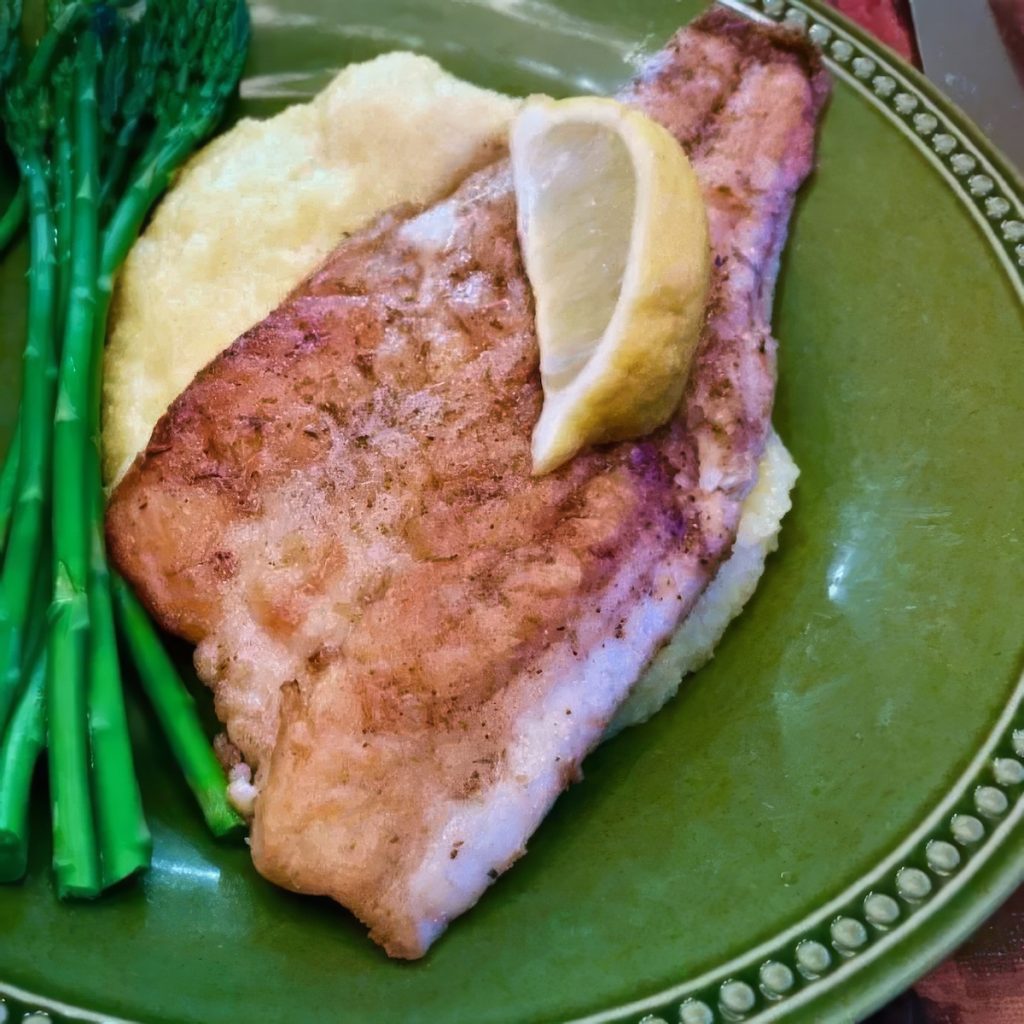
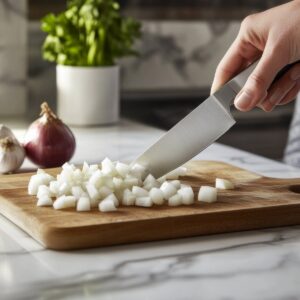
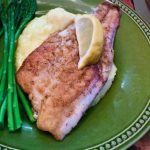

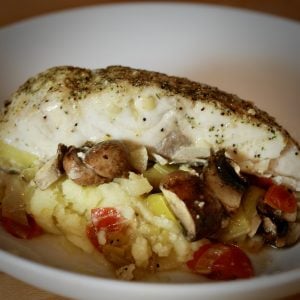
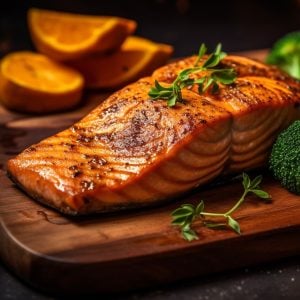
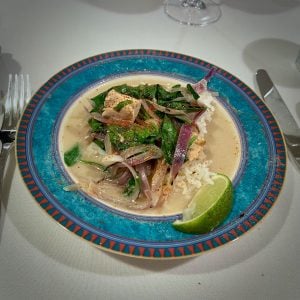


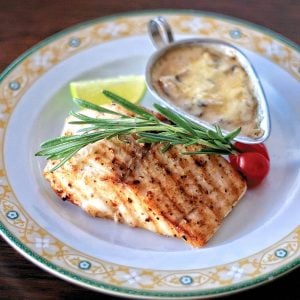



One Response
Take a tip from Eric Ripert, renowned chef known for his seadfood cooking. Try Wondra – it’s a flour that’s super fine, and is so much better than regular AP flour for fish dishes that use it as a pan coating for a pan fry method.